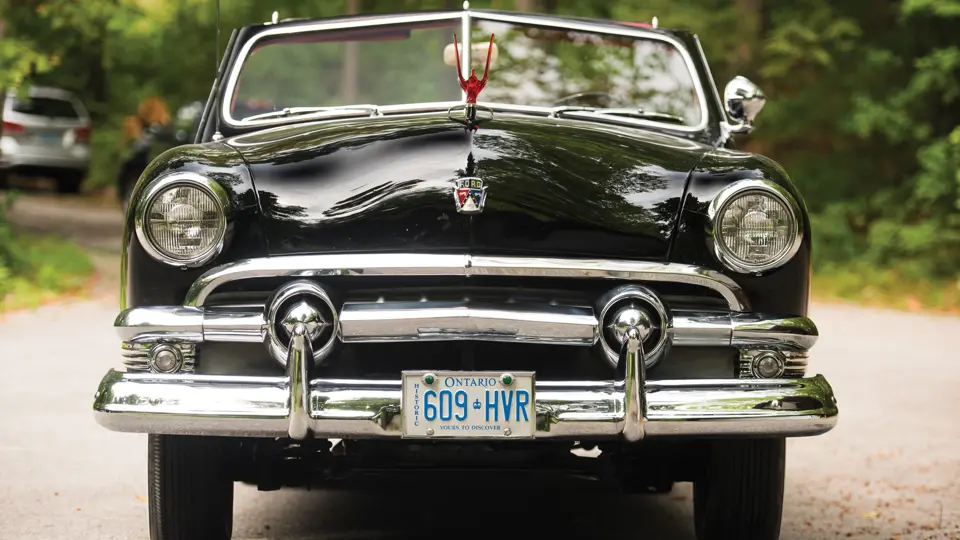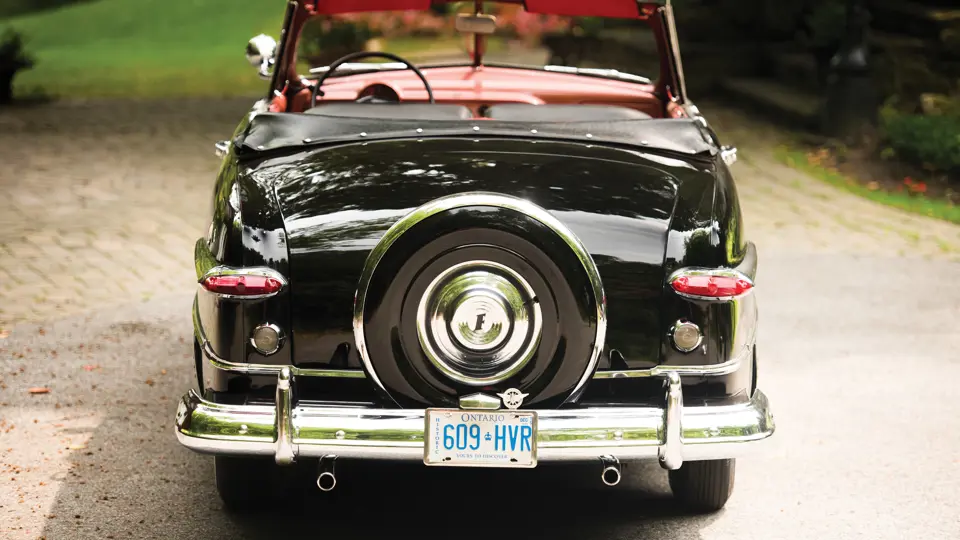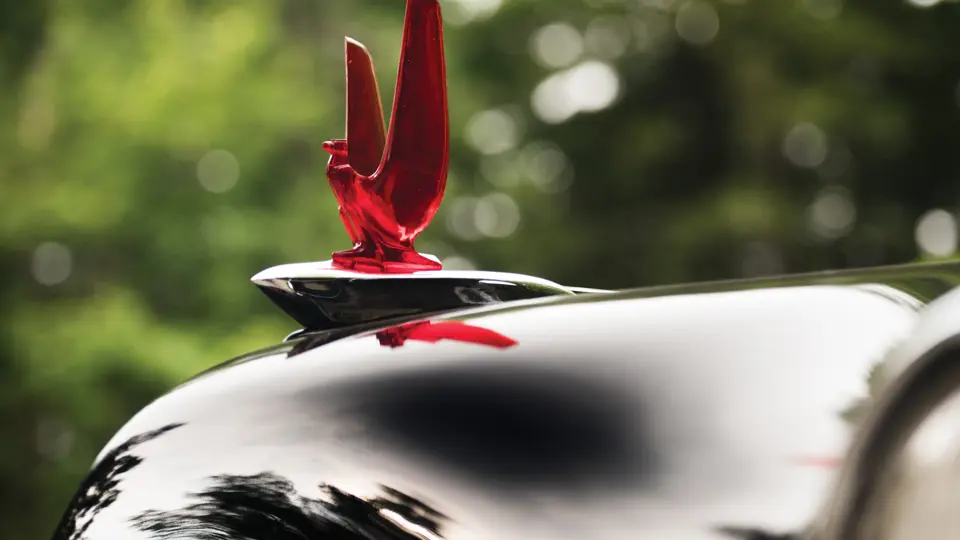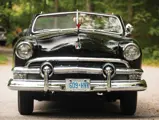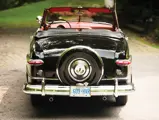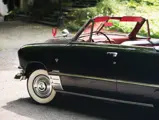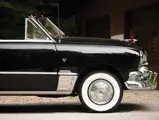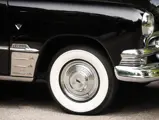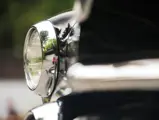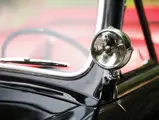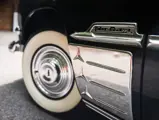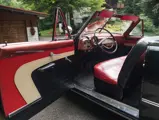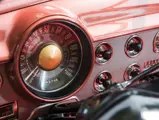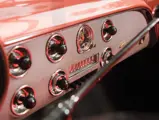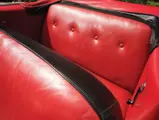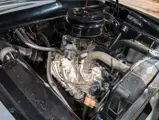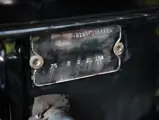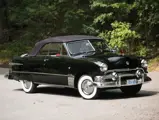Model 1BA. 100 bhp, 239 cu. in. L-head V-8 engine with Holley two-barrel carburetor, three-speed manual transmission with overdrive, coil-spring independent front suspension, live rear axle with semi-elliptical leaf-spring suspension, and four-wheel hydraulic drum brakes. Wheelbase: 114 in.
Ford was on the ropes following the Second World War. Losses were mounting and Ford needed a winner. The new Ford cost the company $72 million in investment and 10 million man-hours, but by the end of 1949, it had earned the company $177 million in profit and had outsold Chevrolet by 100,000 vehicles. A record 28.2 million people checked out the new Ford in dealer showrooms over the first three days of its announcement. Although the 1950 Fords looked very similar to the revolutionary 1949 Fords, there were reportedly 50 improvements that year. These consisted of minor changes, such as the recessed filler cap, a new hood ornament, button door handles, a three-blade radiator fan, lower parking lights in wraparound chrome housings, a Ford crest to replace the block Ford letters, more durable seat foam, and better-quality fabrics, which all added up to an improved, cleaner, and more appealing design.
All 1951 Ford convertibles were powered by the trusty 100-brake horsepower, 239-cubic inch flathead V-8 fitted with a Holley two-barrel carburetor. The flathead in 1951 was smoother and quieter thanks to a new composite timing gear, revised pistons, a new crankshaft, and the fitting of rubber O-ring seals.
The Custom Convertible offered here was acquired by its owner years ago from collector Dennis Carpenter. Properly restored, it features a rebuilt, correct V-8 engine and three-speed transmission with overdrive, as well as many other options and accessories, including a factory AM radio, a heater, rocker moldings, rear fender skirts, and a spotlight. Dual exhaust has been added, along with a Continental kit and a red plastic “hood bird” that is both rare and unusual. The interior was restored using correct LeBaron-Bonney leather materials, and the top was redone with Haartz cloth.
The car is a pleasure to drive and would be wonderful for sunnier climes this winter!




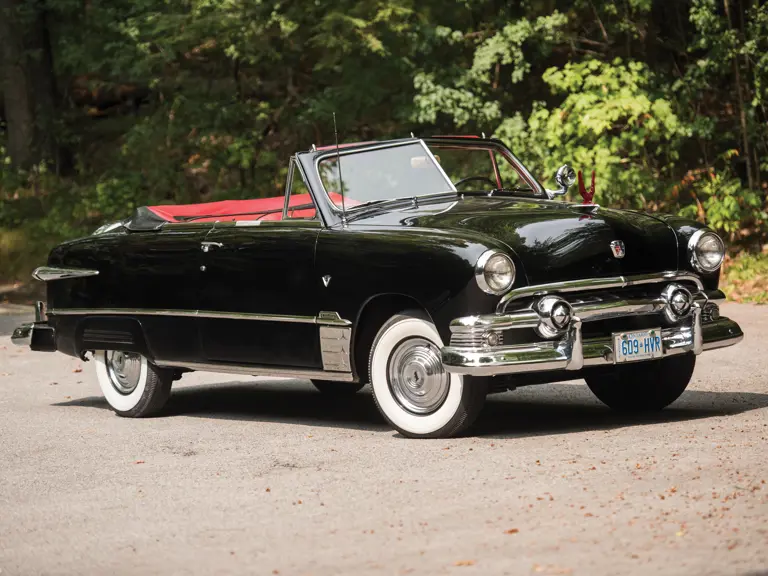

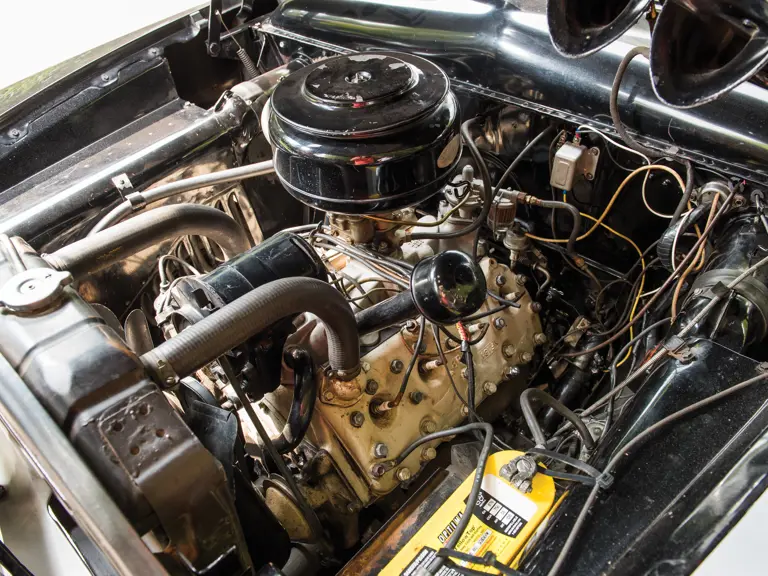
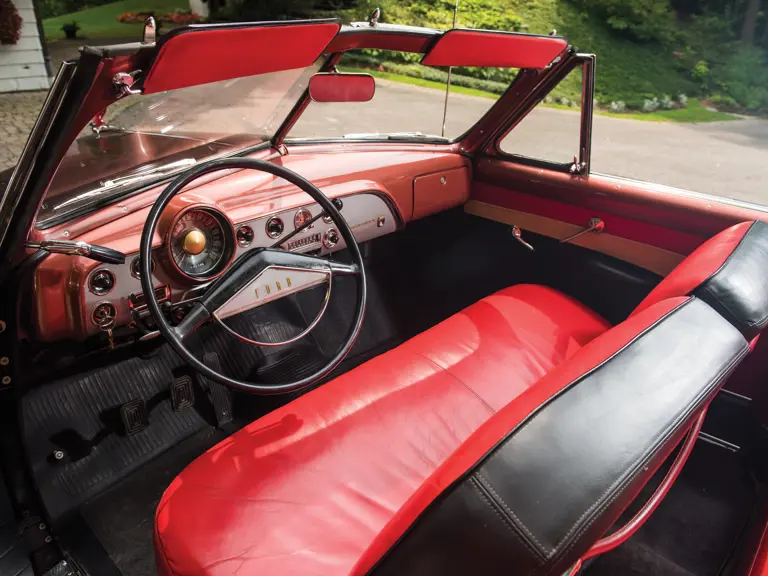
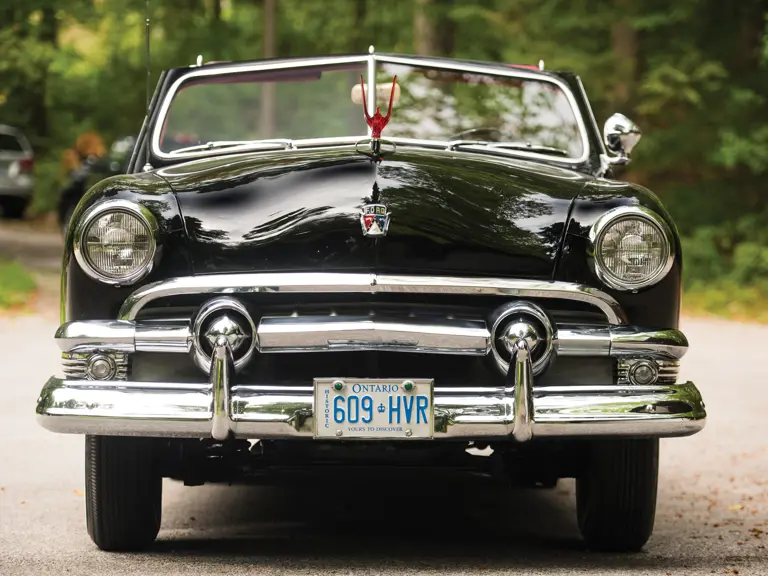
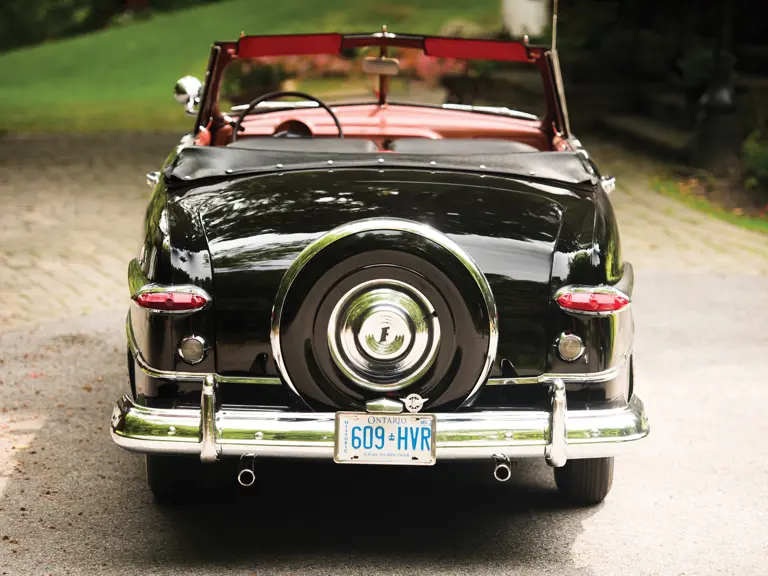
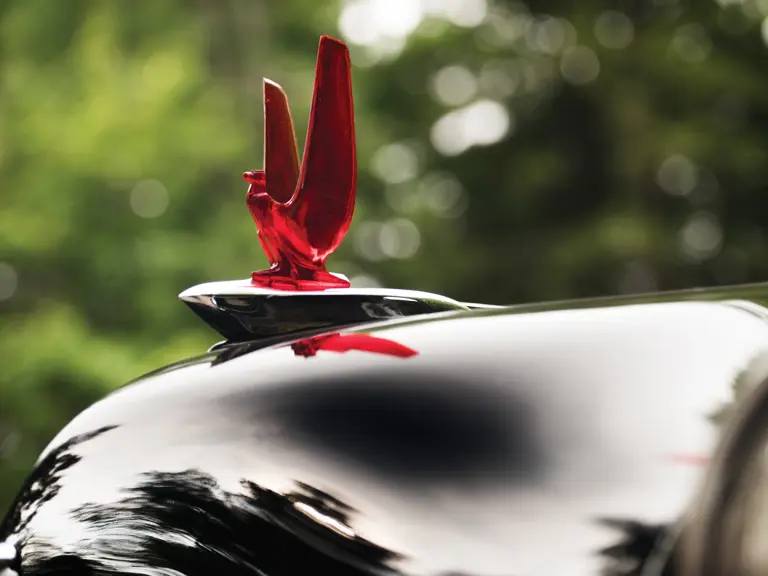
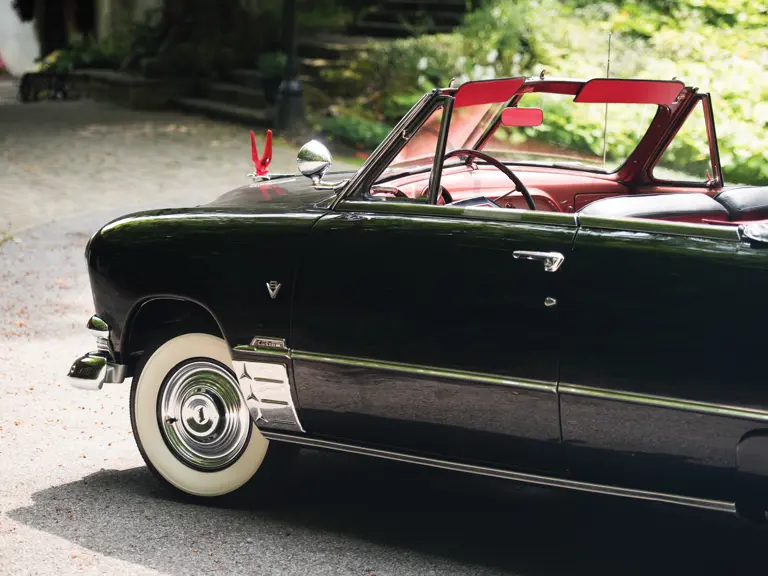
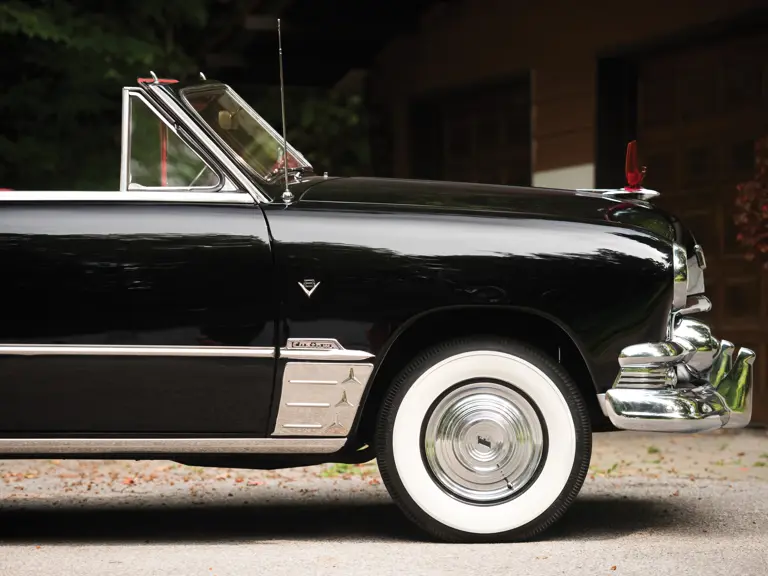

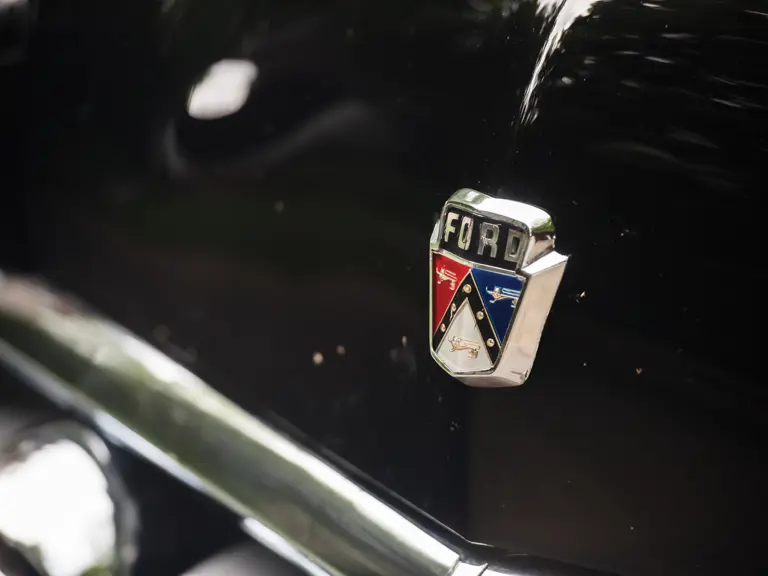
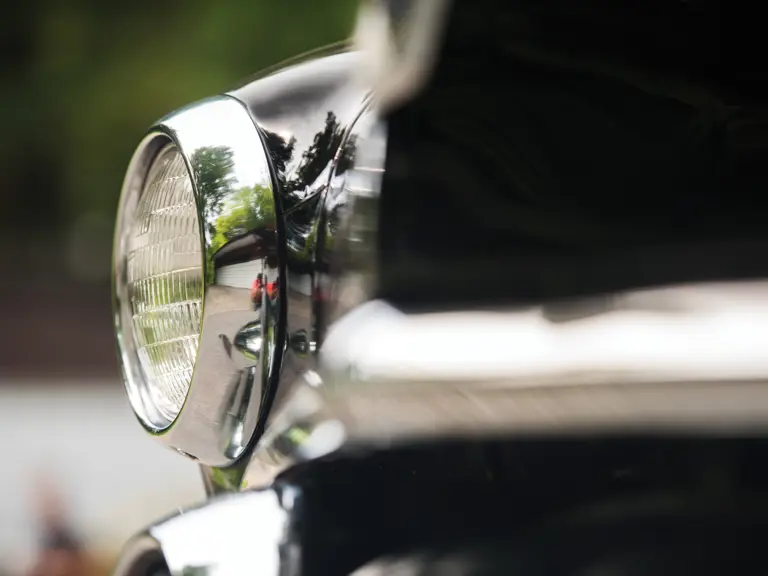
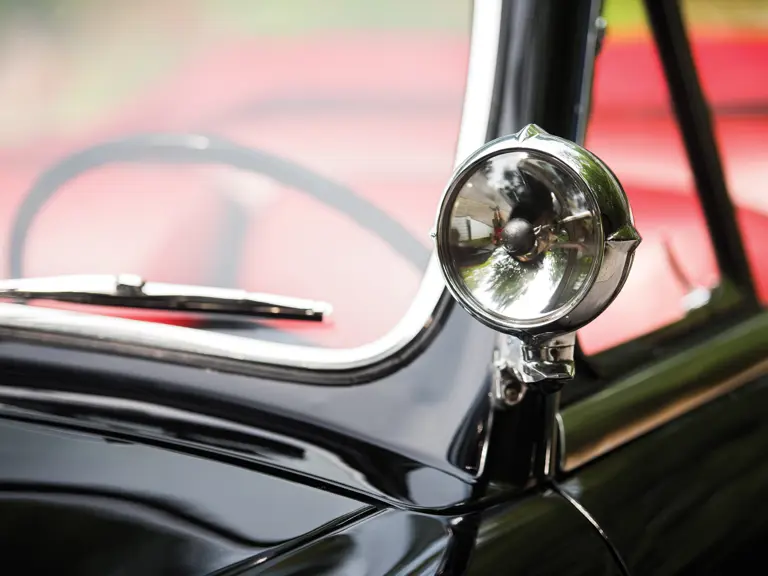
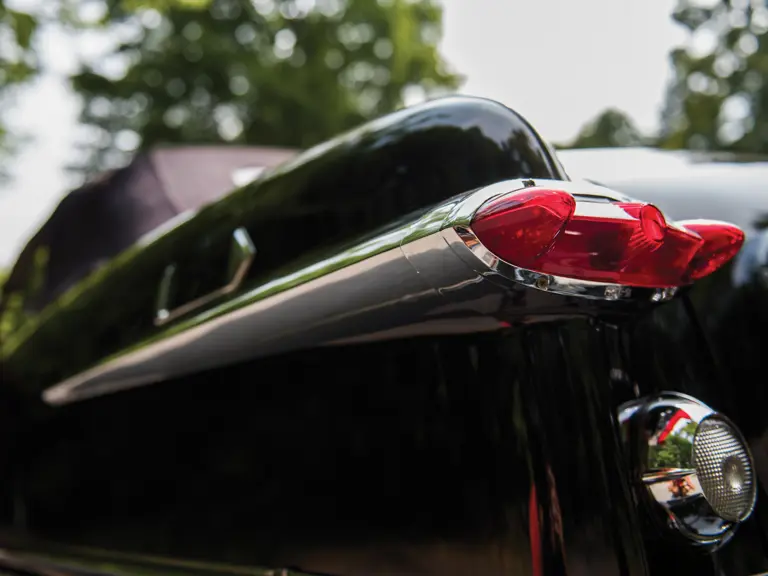

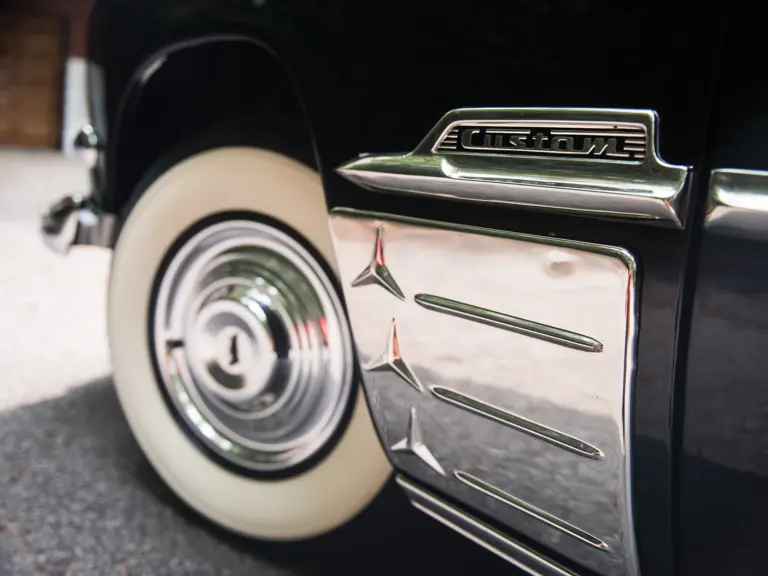
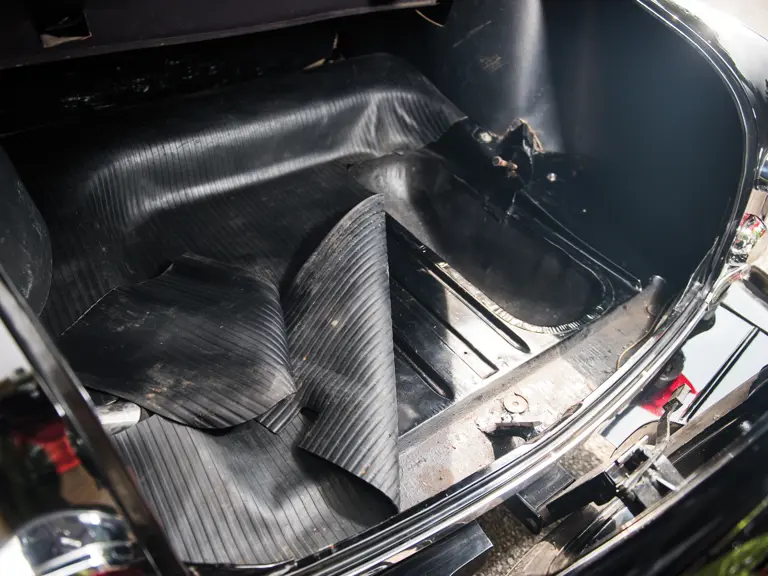
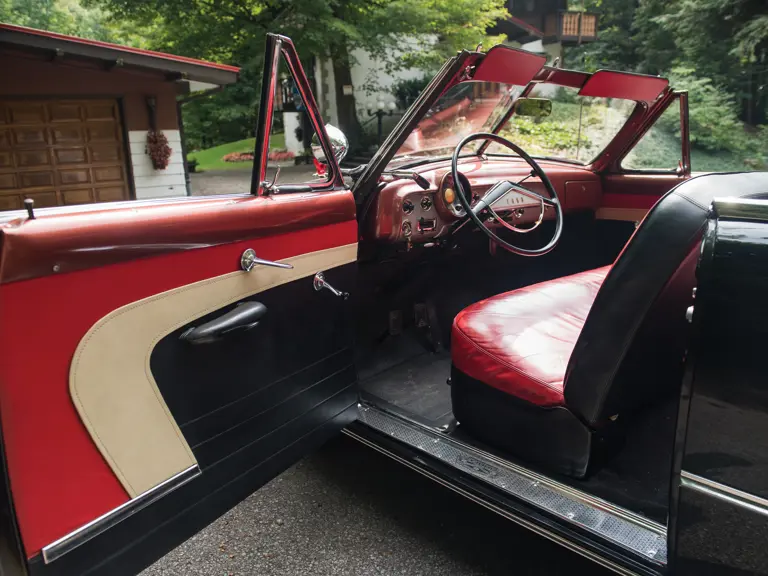

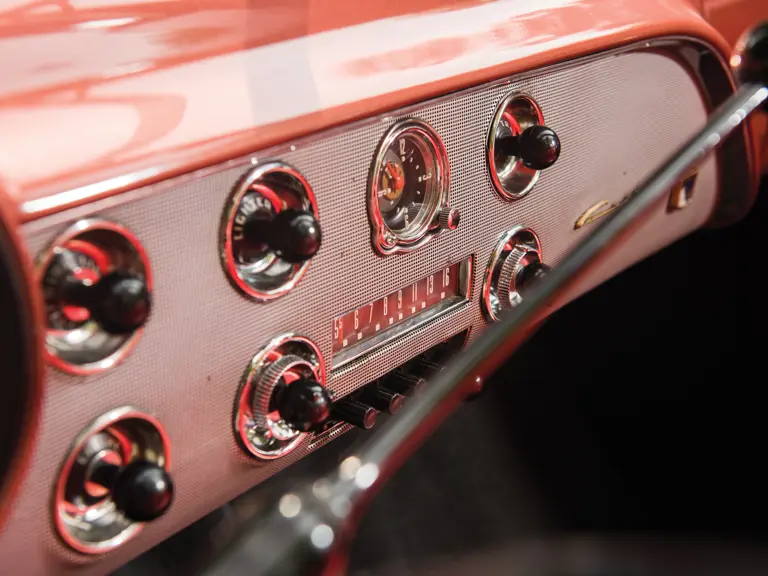
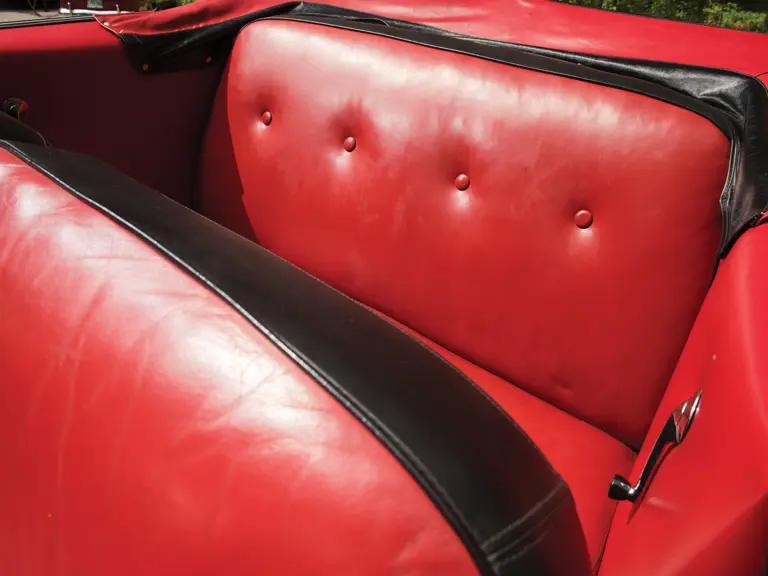

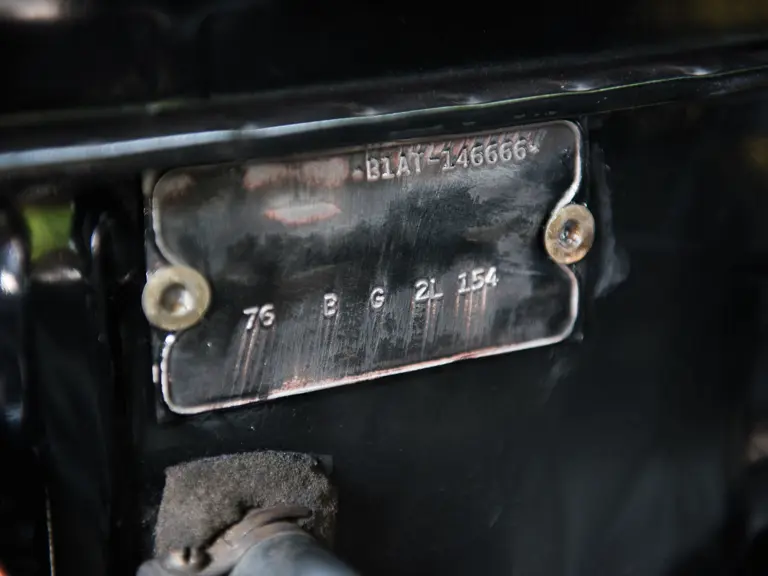
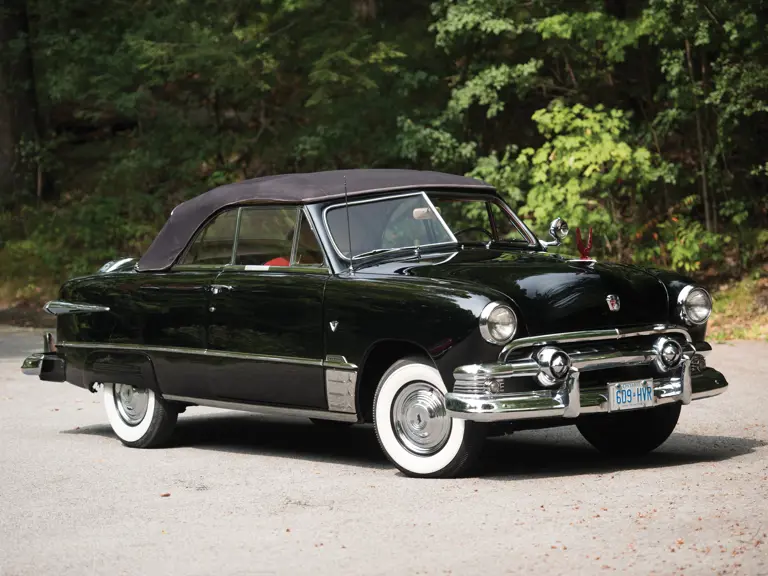
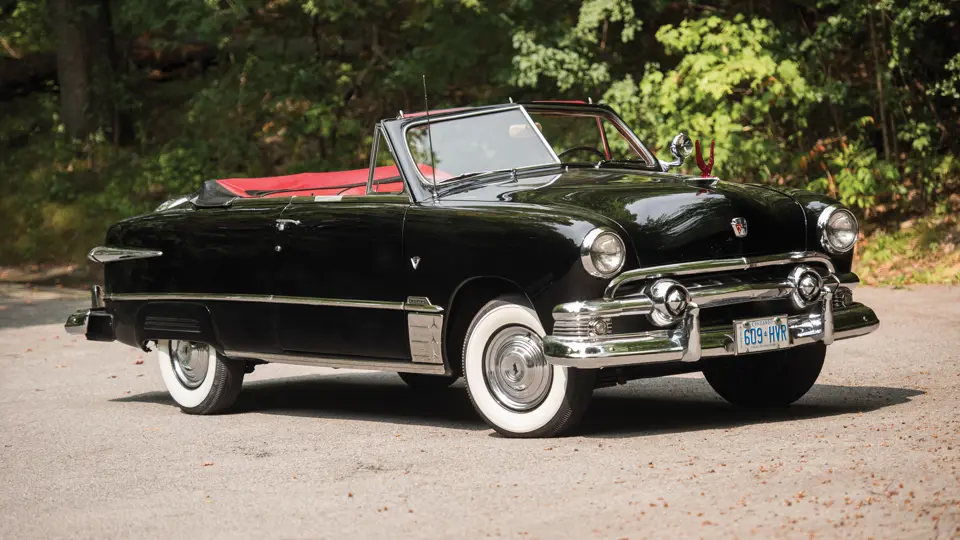
 | Hershey, Pennsylvania
| Hershey, Pennsylvania
